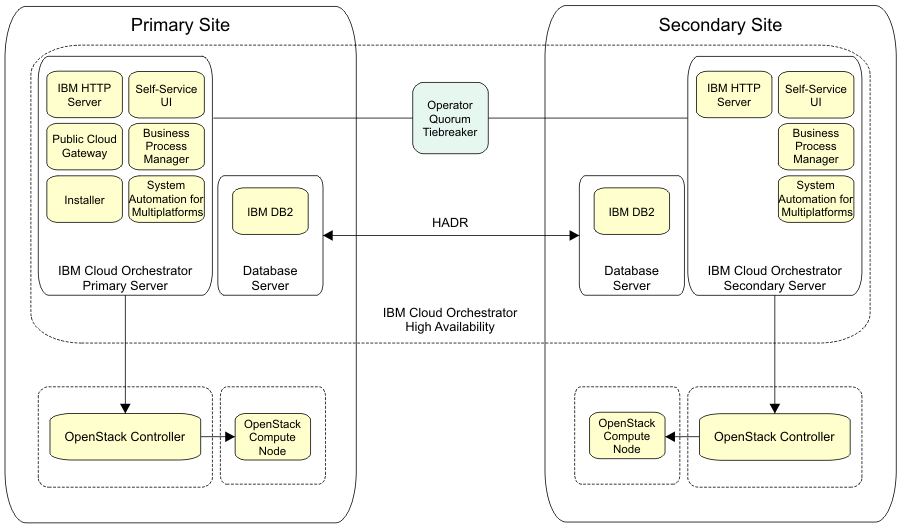Installing high availability across multiple sites
IBM® Cloud Orchestrator can be installed in high-availability configuration in two data centers in different sites, if the connection speed between them is as good as in a LAN.
- Use DB2 HADR (high availability disaster recovery) replication to ensure data replication between the sites. For information about implementing DB2 HADR, see Initializing high availability disaster recovery (HADR).
- In the two sites, you must define the same subnets and VLANs and they must have IP addresses in the same range.
- All the IBM Cloud Orchestrator required ports must be opened between the IBM Cloud Orchestrator instances on one site to the other IBM Cloud Orchestrator instances in the secondary site. For more information, see Ports used by IBM Cloud Orchestrator.

The multisite high-availability configuration is installed like the standard high availability choosing nodes on different datacenter.
- Download the Business Process Manager binaries in the /tmp/bpm directory.
- Put all the other IBM Cloud Orchestrator binaries in the /tmp directory.
This configuration is active-active, with all the traffic managed by the load balancer that divides the load to both the sites as in standard high availability configuration. The high-availability configuration covers the failover of the IBM Cloud Orchestrator components with the exception of Public Cloud Gateway that is not in high availability and is a single point of failure.
If the connection between the primary data center and the secondary data center fails and the two nodes cannot connect to each other, a tiebreaker is needed to decide which node should take control and do the necessary automation actions to keep the resources available.
In the multi site high availability scenario, the operator is asked to act as a tiebreaker, granting quorum to the appropriate IBM Cloud Orchestrator servers in the primary or secondary data center. If you installed IBM Cloud Orchestrator in two sites, you must set the quorum tiebreaker to Operator. This configuration is needed to allow an administrator user to decide which node should receive quorum if a tie occurs due to a network failure or node failure, and the node cannot establish the quorum automatically. For information about setting the quorum tiebreaker, see rConfiguring the quorum tiebreaker.